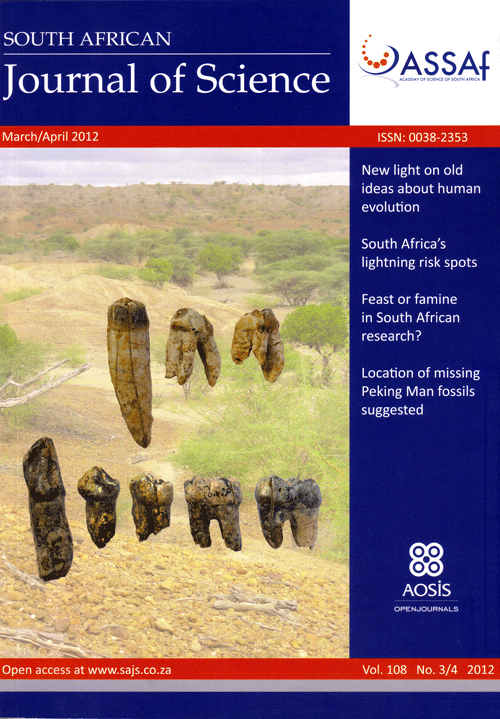Waterford Formation in the south-eastern Karoo: Implications for basin development
Keywords:
Karoo Supergroup, Beaufort, Ecca, stratigraphy, depositsAbstract
Extensive research on the rocks of the Karoo Supergroup has shown that this sequence, which contains an unsurpassed record of Permian-Jurassic tetrapods, records a largely unbroken stratigraphic succession from 300 Ma to 180 Ma. This Gondwanan succession was deposited in a changing environmental setting reflecting glacial marine through deltaic to fluvial and aeolian desert conditions. The contact between the Ecca and Beaufort Groups (at the top of the Waterford Formation of the Ecca Group) in the southern and western Karoo represents a change in depositional environment from a subaqueous to a subaerial delta plain. By contrast, the Waterford Formation has not yet been recognised in the south-eastern Karoo Basin, which might imply that a major unconformity is present between the Fort Brown Formation of the Ecca Group, deposited in a prodelta environment, and the overlying fluvially deposited Koonap Formation of the Beaufort Group. From careful documentation of lithofacies and sedimentological data, it can be demonstrated that the Waterford Formation is indeed present in the south-eastern part of the basin and that no major unconformity is present - a fact that has implications for the mapping of Karoo rocks in the Eastern Cape Province of South Africa, for understanding the depositional environment of 'reptilian' fossils from the lowermost Beaufort in this part of the Karoo basin, and for basin development models.Published
2012-03-07
Issue
Section
Research Letters
License

All articles are published under a Creative Commons Attribution 4.0 International Licence
Copyright is retained by the authors. Readers are welcome to reproduce, share and adapt the content without permission provided the source is attributed.
Disclaimer: The publisher and editors accept no responsibility for statements made by the authors
How to Cite
Rubidge, B., Hancox, J., & Mason, R. (2012). Waterford Formation in the south-eastern Karoo: Implications for basin development. South African Journal of Science, 108(3/4), 5 pages. https://sajs.co.za/article/view/9896
Views
- Abstract 221
- PDF (1MB) 129
- HTML 107
- EPUB 104
- XML 114
- Figure_1 0
- Figure_2 0
- Figure_3 0
- Figure_4 0












.png)